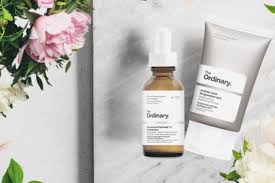
Can You Mix Retinol and Azelaic Acid Together?
Azelaic acid and retinol are two skincare ingredients that deliver unique and impressive results. You have no doubt already know about the benefits of retinol and how it can improve the overall look and feel of the complexion whilst helping with skin clarity. Known for being one of the most potent skin ingredients, retinol provides an array of benefits for the skin, from reducing the appearance of fine lines and wrinkles, whilst combating blemishes and breakouts. Azelaic acid on the other hand provides similar benefits but has a far gentler approach and can be used on sensitive and rosacea prone skin.
With both powerhouse ingredients delivering such impressive, noticeable results, it’s no wonder we’ve seen the question of today’s blog post circulating. So, let’s dive in and find out more about whether you can mix retinol and azelaic acid together. Before we get started however, let’s have a quick refresher on both azelaic acid and retinol and how they benefit the skin.
What are the benefits of Azelaic Acid?
Azelaic acid can reduce inflammation on the skin and can calm any flare-up of breakouts on the skin surface.
Azelaic acid contains antibacterial properties that help remove dirt, bacteria, debris, and build-up of sebum found in the pores.
Azelaic acid is known for its ability to improve the appearance of hyperpigmentation, dark spots, sun damage, and post acne scarring.
Azelaic acid provides mild exfoliation ridding the skin of the build-up of dead skin cells and giving the face a smoother, more even texture and finish.
Azelaic acid does not increase the skin’s sensitivity to any UV exposure.
If you wanted to know more about azelaic acid, you can check out our dedicated blog post about it over on The Beauty Insiders.
What are the benefits of Retinol?
Retinol works at combating breakouts, spots, and acne.
Retinol can work in the lower layers of the skin and helps to boost collagen and elastin production.
Retinol increases the speed of skin cell turnover ensuring signs of hyperpigmentation and dark spots are significantly reduced.
Retinol improves the appearance of fine lines and wrinkles as well as firming any loss of elasticity.
Don’t forget if you needed to know more about how retinol works on the skin, check out the blog post, what are the skincare benefits of retinol.
Can you use retinol with azelaic acid?
Yes, you can, but be careful if you have a sensitive skin type as too much exfoliation can become too much for the skin. If you find you have an oily and blemish prone skin, you may find teaming both retinol and azelaic acid together will be an effective power duo. Azelaic acid will help by reducing the appearance of hyperpigmentation and dark spots, especially any scarring left behind from acne flare-ups. You’ll also find your skin feels cleaning with retinol penetrating further down in the skin and unclogging the pores of excess sebum, dirt, and bacteria build-up.
With each ingredient working effectively alone, as well as in a team you’ll find the overall look and feel of your complexion is improved. Signs of pigmentation are reduced, and acne is treated.
One important point to remember about teaming these powerhouse ingredients together, is to ensure you apply a daily SPF of 30 and above to ensure you protect the skin from exposure to free radical damage, such as pollution and harmful sun damage.
What goes first azelaic acid or retinol?
This very much depends on the type of product the ingredients are formulated in to. In previous blog posts I have discussed how the basic skincare rule is to apply your products from thinnest consistency to the thickest. You’ll often find azelaic acid is usually formulated into products, such as exfoliating toners, serums, or face washes, all of which are used during separate stages of your routine. As for retinol, this potent powerhouse will come in products such as serums, face oils, and moisturisers, all of which are applied at the later stage of your skincare routine.
If you find yourself still a little confused, a simple way of remembering the application order is the fact that retinol should only be used at night and so applying it to the cleansed skin before you head off to bed will make things a lot easier to remember. You will also find that azelaic acid provides effective skin exfoliation meaning it is able to slough away the build-up of dead skin cells and debris revealing fresh, more absorbent skin underneath allowing any products you apply afterwards to absorb quickly into the lower layers of the skin.
Can I use niacinamide, azelaic acid and retinol together?
Yes, you can, but not all together as this can be too much for the skin. Niacinamide and retinol are perfectly safe to use together as you’ll find the humectant traits of niacinamide are able to counteract the drying effects of retinol keeping the complexion plumped, hydrated and comfortable.
To use all three ingredients together it may be a case of alternating when you use azelaic acid and retinol when it’s teamed with niacinamide. The most effective way would be to use an exfoliating toner enriched with azelaic acid after cleansing in your morning routine. You can then follow this in the evening by applying retinol and niacinamide as this will ensure enough time has passed and the pH levels of skin have rebalanced from the morning.
Is azelaic acid better than retinol?
Both azelaic acid and retinol perform similar benefits for the skin, but both still contain their own unique and beneficial properties. Therefore, many use both potent ingredients simultaneously in their routines to reap the rewards in the quickest and easiest ways. Therefore, if you skin can tolerate it, use both ingredients together, not forgetting of course to apply a daily SPF for protection from UV rays.
There you have it, hopefully I have answered most of your questions about mixing azelaic acid and retinol together, but if you have any more, do come and find us on Instagram.


